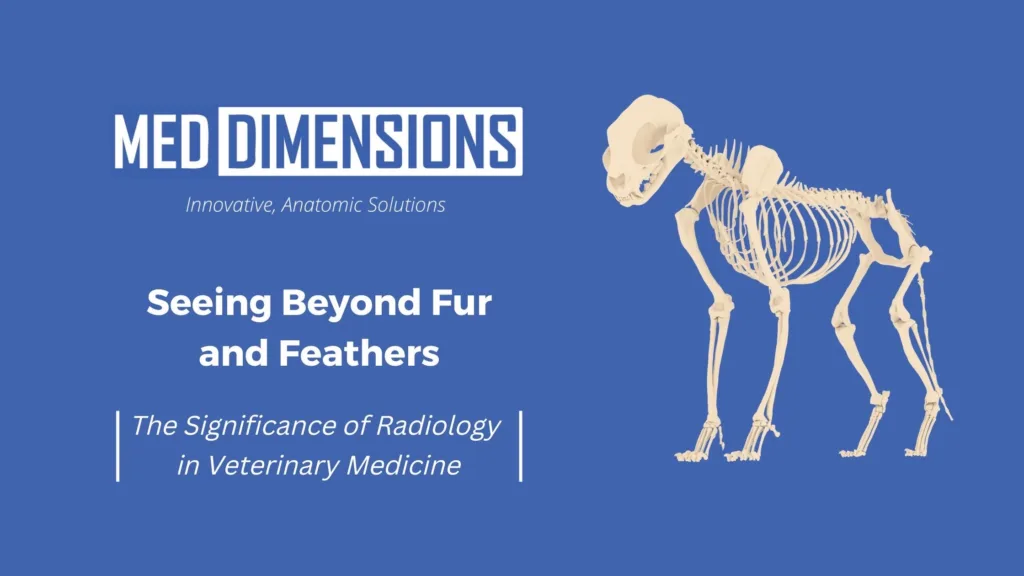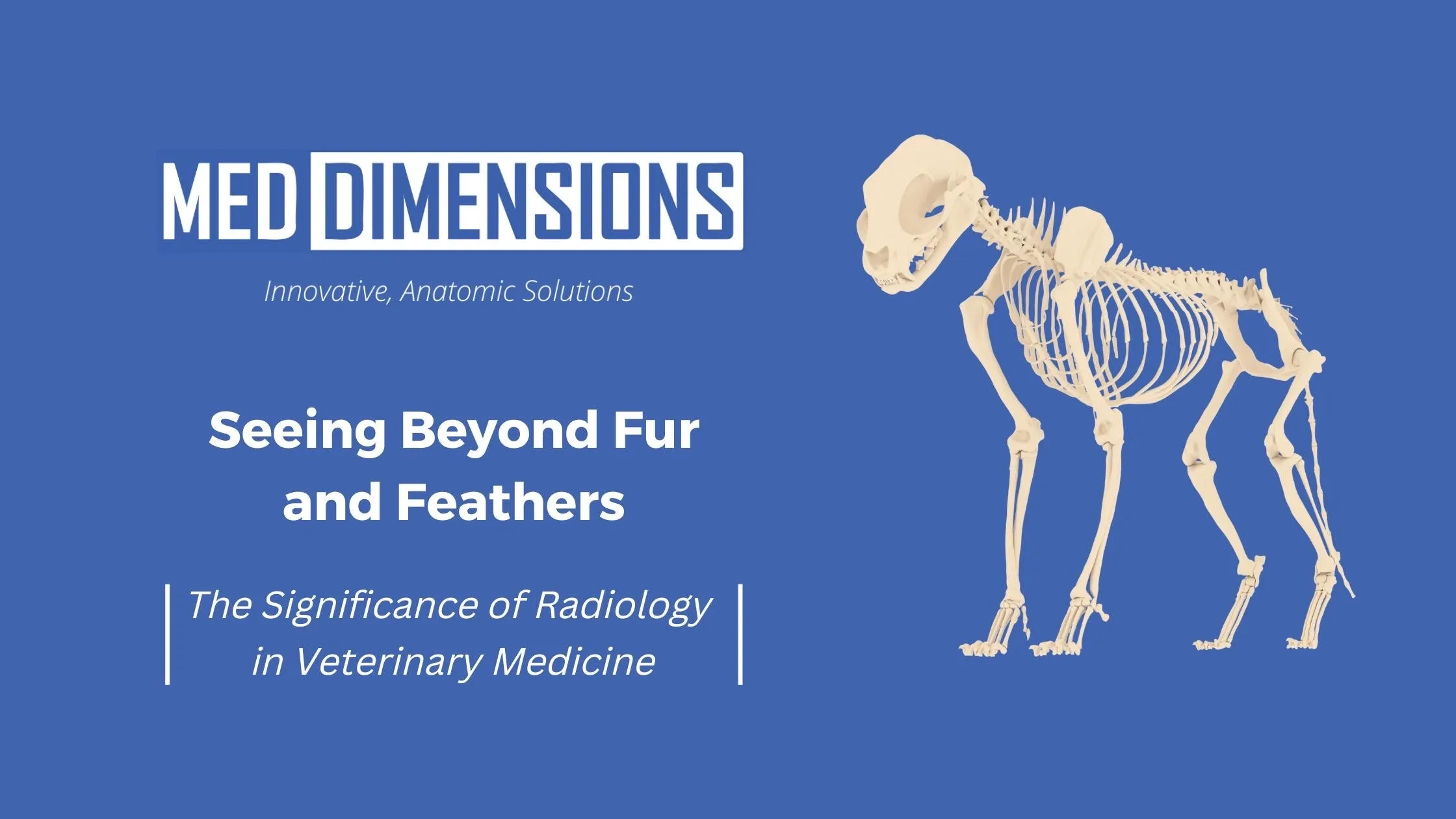Seeing Beyond Fur and Feathers: The Significance of Radiology in Veterinary Medicine

When we think about medical imaging, our minds often conjure images of human patients, hospitals, and doctors in white coats. However, the realm of radiology extends far beyond the walls of human healthcare facilities. In veterinary medicine, radiology plays a crucial role in diagnosing, treating, and caring for our beloved animal companions. In this blog post, we’ll explore what radiology is in the context of veterinary medicine and why it is so significant.
What is Veterinary Radiology?
Veterinary radiology is a specialized field that employs various imaging techniques to visualize the internal structures of animals, ranging from household pets like cats and dogs to exotic creatures in zoos and wildlife sanctuaries. These techniques help veterinarians diagnose illnesses, assess injuries, and monitor the health of their animal patients.
Types of Veterinary Radiology
Just as in human medicine, veterinary radiology encompasses various imaging methods to cater to the diverse needs of animal patients:
- X-ray Radiography: X-rays examine bones, joints, and soft tissues. They help diagnose fractures, arthritis, and respiratory conditions, among others.
- Ultrasound: Ultrasonography provides real-time images of soft tissues, allowing veterinarians to examine organs like the heart, liver, kidneys, and bladder. It is especially useful for monitoring pregnancy and fetal development in animals.
- Computed Tomography (CT): CT scans are beneficial for detailed imaging of the body, offering cross-sectional views. They are crucial for diagnosing conditions in the brain, chest, and abdomen.
- Magnetic Resonance Imaging (MRI): MRI is employed to visualize soft tissues with exceptional clarity, aiding in the diagnosis of neurological disorders, spinal issues, and soft tissue injuries.
- Fluoroscopy: This technique provides real-time moving images, making it valuable for procedures like evaluating the swallowing function in animals.
Why is Radiology Significant in Veterinary Medicine?
- Accurate Diagnoses: Veterinary radiology enables accurate and non-invasive diagnoses, helping veterinarians pinpoint the root causes of various health issues in animals. This is particularly vital when animals cannot communicate their discomfort or pain.
- Effective Treatment Planning: Radiology assists veterinarians in planning surgeries and other medical procedures for animals. It offers insights into the precise location and extent of an issue, contributing to more successful outcomes.
- Monitoring Progress: Regular imaging can help veterinarians monitor the progress of treatments and the healing process in animals, ensuring that they receive the best care possible.
- Prenatal Care: Radiology is a fundamental tool for monitoring pregnancy in animals and ensuring the health and well-being of both the mother and her offspring.
- Research and Education: Just as in human medicine, veterinary radiology plays a critical role in advancing medical knowledge, enabling veterinarians to study, learn, and enhance the care they provide.
- Customized Care: Radiological imaging allows for tailored and compassionate care, taking into account the unique anatomical and physiological characteristics of each animal patient.
- Preventive Medicine: Radiology is not only about diagnosing problems but also about early detection of issues before they become severe. It aids in preventive healthcare for animals.
In conclusion, radiology in veterinary medicine is a powerful tool that empowers veterinarians to provide the best possible care to our animal companions. It enables them to see beyond fur and feathers, offering a window into the health and well-being of animals, diagnosing conditions, and ensuring their treatment and recovery. The significance of radiology in veterinary medicine is a testament to the importance of extending advanced medical care to all members of our diverse and beloved animal kingdom.


